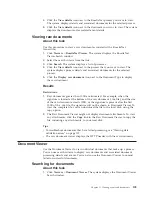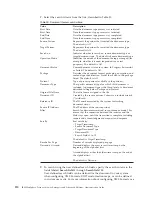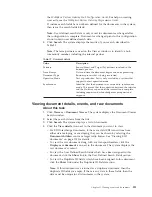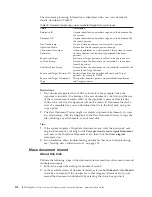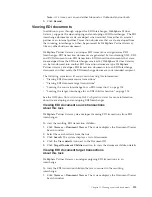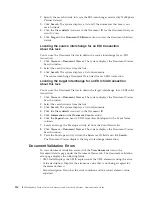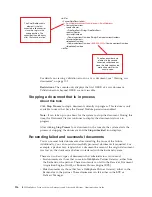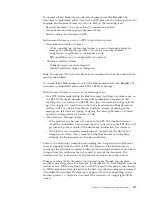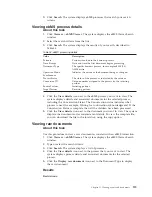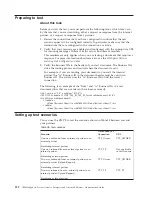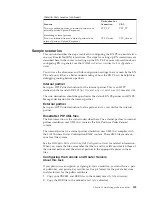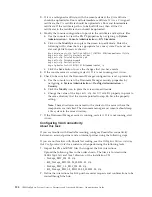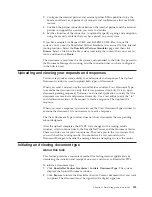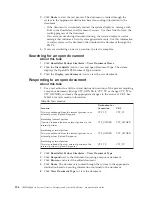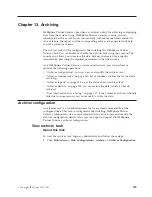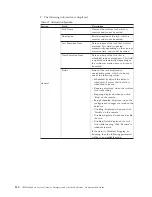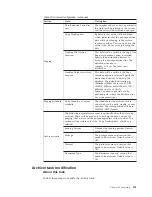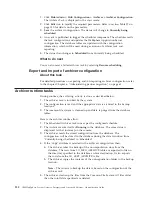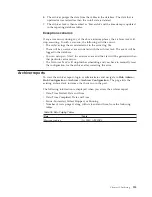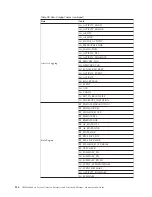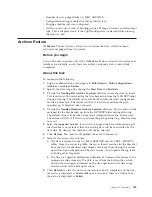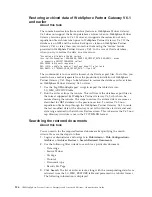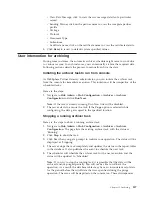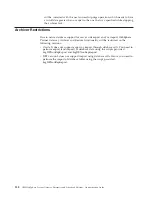
Table 35. Test scenarios (continued)
Scenario
Destination for
Connection
URL
Two-way outbound from an internal partner to an
external partner (Upload Response).
Simulating external partner.
VTP_TP
VTP_TP
Two-way inbound from an external partner to an
internal partner (Upload Response).
VTP_Owner
VTP_Owner
Sample scenarios
This section describes the steps involved in configuring the RN PS to simulate two
one-way RosettaNet (RN) interactions. The steps for setting up RN interactions are
described here in the context of setting up the RN PS. For more information about
configuring RN in general, see the
WebSphere Partner Gateway Hub Configuration
Guide
.
You will see the directories and hub configuration settings that are used by the RN
PS, and you will have a better understanding of how the RN PS can be helpful in
debugging routing between partners.
Internal partner
Set up an HTTP sink destination for the internal partner. This is an HTTP
destination that sends to URL
http://<
console-ip
>:<
console-port
>/console/sink
.
The sink destination should be specified as the default RN PS partner and RN PS
Manager destination for the internal partner.
External partner
Set up an HTTP sink destination for the partner just as you did for the internal
partner.
RosettaNet PIP XML files
The 3A4 interaction is the scenario described here. The external partner to internal
partner simulation uses XML that contains the 3A4 Purchase Order Request
content.
The internal partner to external partner simulation uses XML that complies with
the 3A4 Purchase Order Confirmation RNSC content. These XML files reside on
your local file system.
See the
WebSphere Partner Gateway Hub Configuration Guide
for related information.
When you create the files, remember that the to and from Ids must match those of
the internal partner and the external partner in the appropriate places in these
files.
Configuring the Console and Router Servers
About this task
If you plan to use encryption or signing in your simulation, you must have a pair
of public-key and private-key certificates. Use p8 format for the private keystore
and der format for the public certificate.
1.
Copy your PKCS#8 and DER files to the
common/security/vtp
directory.
2.
Copy the DER file to the
common/security/ca
directory.
Chapter 12. Simulating production traffic
123
Summary of Contents for E02HRLL-G - WebSphere Partner Gateway...
Page 20: ...14 IBM WebSphere Partner Gateway Enterprise and Advanced Editions Administration Guide...
Page 66: ...60 IBM WebSphere Partner Gateway Enterprise and Advanced Editions Administration Guide...
Page 80: ...74 IBM WebSphere Partner Gateway Enterprise and Advanced Editions Administration Guide...
Page 86: ...80 IBM WebSphere Partner Gateway Enterprise and Advanced Editions Administration Guide...
Page 90: ...84 IBM WebSphere Partner Gateway Enterprise and Advanced Editions Administration Guide...
Page 134: ...128 IBM WebSphere Partner Gateway Enterprise and Advanced Editions Administration Guide...
Page 154: ...148 IBM WebSphere Partner Gateway Enterprise and Advanced Editions Administration Guide...
Page 194: ...188 IBM WebSphere Partner Gateway Enterprise and Advanced Editions Administration Guide...
Page 228: ...222 IBM WebSphere Partner Gateway Enterprise and Advanced Editions Administration Guide...
Page 258: ...252 IBM WebSphere Partner Gateway Enterprise and Advanced Editions Administration Guide...
Page 267: ......
Page 268: ...Printed in USA...

